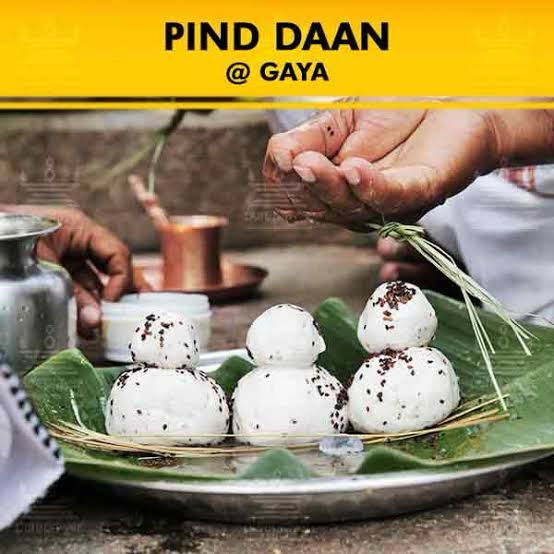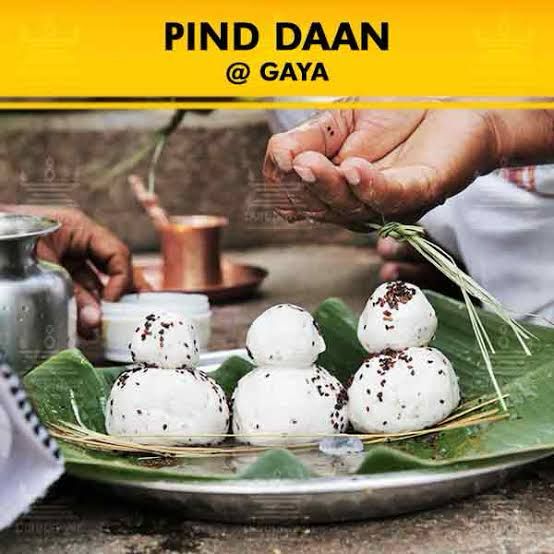The Sacred Tradition of Shraddha
By Lokanath Mishra
In an Odia family, the Shraddha ceremony is a revered tradition that has been passed down through generations. This ancient ritual is a way to pay tribute to ancestors and seek their blessings. Let’s explore the story of an Odia family and their experience with the Shraddha ceremony.

The family’s patriarch, a learned scholar, would often narrate the story of Lord Varaha, the incarnation of Lord Vishnu, who introduced the Shraddha ceremony to the world. According to legend, Lord Varaha created three pindas, representing the father, grandfather, and great-grandfather, and performed the worship using sesame seeds. This story highlights the significance of the pinda offering, which represents the subtle body of the deceased and nourishes and satisfies the departed one.

The family’s experience with the Shraddha ceremony reflects the three phases of its evolution. From the Agnau-karaṇa phase, where burnt offerings were made to the ancestors, to the Piṇḍa-dāna phase, where rice balls were offered, and finally to the Brāhmaṇa Bhojana phase, where food is offered to priests, the family has come to understand the depth and richness of this ancient tradition.
For the family, the Shraddha ceremony is a symbol of love and gratitude towards their ancestors. They believe that by performing this ritual, they are affirming lineal continuity and paying tribute to those who have come before them. The pinda offering is a way to nourish and satisfy the departed ones, demonstrating their love and respect.
As the family performs the Shraddha ceremony, they come together to celebrate their heritage and the contributions of their ancestors. They understand that this ancient tradition has undergone significant transformations throughout history, but its essence remains the same – to honor and pay tribute to those who have shaped their
The family’s experience with the Shraddha ceremony is a testament to the power of tradition and the importance of honoring one’s ancestors. As they continue to perform this ritual, they are reminded of the significance of love, gratitude, and respect for those who have come before them. This legacy will continue to inspire future generations to cultivate these values and cherish their heritage.
In an Odia family, the Shraddha ceremony is an essential part of their cultural and spiritual heritage. It is performed on various occasions to pay tribute to ancestors and seek their blessings. Let’s explore the different types of Shraddha ceremonies that are commonly held in an Odia family.
Various Occasions for Shraddha
- Patha Shraddha: Held before the funeral, this ceremony is a way to prepare the deceased for their journey to the afterlife.
- Dasah Shraddha: Performed on the 10th day after death, this ceremony is a way to offer respect and pay tribute to the deceased.
- Bara Shraddha: Held on the 12th day after death, this ceremony is an essential part of the mourning period.
- Annual Shraddha: Performed annually on the day of death of the father and mother, this ceremony is a way to honor and remember them.
- Pitrupakshya Shraddha: Held during Mahalaya, this ceremony is a way to pay tribute to ancestors and seek their blessings.
- Dipadaan Shraddha: Performed on the day of Diwali, this ceremony is a way to offer respect and seek blessings from ancestors.
- Shraddha during Marriages: Held during marriage ceremonies, this ritual is a way to seek blessings from ancestors for the newlyweds.
- Shraddha during Asti Bisharjan: Performed during the immersion of ashes, this ceremony is a way to offer respect and pay tribute to the deceased.
- Shraddha in Gaya: Held in Gaya, a sacred city in Bihar, this ceremony is considered especially significant for offering pinda to ancestors.
- Pindadaan in Badrinath: If pindadaan is performed in Badrinath, it is believed that no further Shraddha ceremonies are required.
The Shraddha ceremony is an essential part of Odia culture and tradition. It is a way to honor ancestors, seek their blessings, and ensure their spiritual well-being. By performing these ceremonies, families can demonstrate their love and respect for their ancestors and continue to strengthen their bond with them.

